



Jacobs. A world where you can.



As climate change threatens water security around the world, more communities are turning to water reuse as a resilient water supply solution and embracing the OneWater principle that all water has value. Jacobs has been supporting clients with water reuse programs for decades, beginning with the first applications of advanced wastewater treatment technologies in the 1960s. We provide our clients with a full range of services, from water reuse feasibility studies to design, construction and operations.

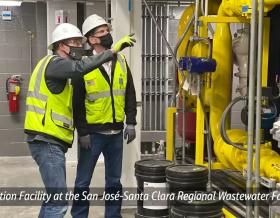
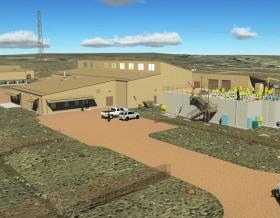
We’ve provided design-build services to the water sector for over 25 years and delivered more than 150 projects. We offer fully integrated design-build and design-build-operate capabilities to tackle the most complex water challenges and work in close collaboration with our clients.


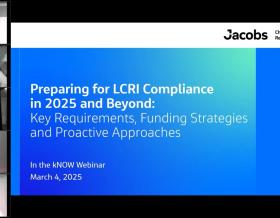
For more than 30 years, Jacobs has been responsible for planning and implementing Lead and Copper Rule-related strategies which protect millions of people in the U.S. and Canada. Our work includes enhanced water quality monitoring strategies, sampling plan development, harvested pipe-scale analysis, lead service line inventories and replacement plans, corrosion control studies and the incorporation of equity and environmental justice considerations into compliance programs.



A curated selection of some of the top-listened to and trending podcast episodes from our popular If/When podcast series.



As a purpose-led company, we know we have a pivotal role to play in addressing the climate emergency. We consider this not only good business, but our duty to channel our technology-enabled expertise and capabilities toward benefitting people and the planet.



We work in partnership, delivering some of the most challenging, diverse and innovative projects and programs globally across multiple sectors. We integrate complex interfaces across planning, procurement and delivery to help unlock better social, environmental and economic outcomes from mega and giga projects.



As our clients navigate the digital transformation and growing cyber risks, we have positioned ourselves at the forefront of this growth, adding digital capabilities, products and tools to serve a growing set of customers.



Sit down with our visionary team of thinkers, dreamers and doers to see what a day in the life is like.



Together with our visionary partner, PA Consulting, we're establishing our position in high end advisory services, creating a springboard to expand in high value offerings beyond the core.


At Jacobs, we're challenging today to reinvent tomorrow by solving the world's most critical problems for thriving cities, resilient environments, mission-critical outcomes, operational advancement, scientific discovery and cutting-edge manufacturing, turning abstract ideas into realities that transform the world for good. With approximately $16 billion in annual revenue and a talent force of more than 60,000, Jacobs provides a full spectrum of professional services including consulting, technical, scientific and project delivery for the government and private sector.



The only certainty about the future is uncertainty. Resilience is an attribute of a smarter planet, and requires planning and adapting ahead of potential threats. We help our clients survive, recover, adapt and thrive.



Jacobs is working to help clients across the United States secure federal funding for projects that make our cities and communities more connected and sustainable. Working hand-in-hand with clients from coast to coast and everywhere in between, Jacobs develops bold, innovative solutions to address the nation’s toughest challenges.
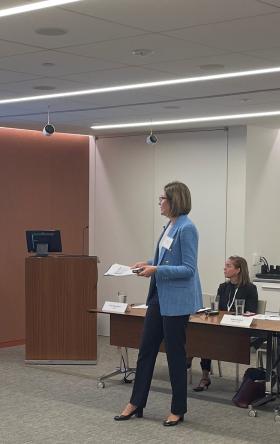

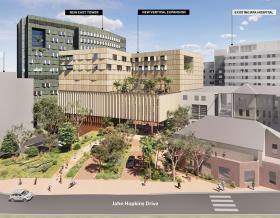
Now more than ever, we appreciate the hard work, sacrifice and dedication of the medical profession in ensuring the health and safety of our communities.



Together, we are stronger. Together, we can transform the future.
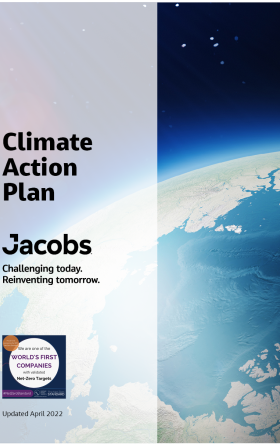


Stories that capture our partnerships and innovative impact for a more connected, sustainable world



Worldwide, unprecedented challenges like COVID-19, are making organizations across all sectors take a closer look at how they can maximize their investments and improve their efficiency to stay competitive. As the aviation industry faces the new pressures of the pandemic, countless airports are having to adapt their future investment plans. Find out how we’re unlocking value for airports by harnessing the power of data to help them to make optimal strategic decisions about their airfield investment.
Airfield pavements and runways are the single most critical asset at an airport but are extremely hard to manage. It can be difficult to predict how pavements will behave in the future, to know what interventions are needed, when and where – balancing engineering needs with commercial goals to maximize return on investment.
Increasingly, these assets must perform better, last longer, and be maintained more easily and cost efficiently.
A collaboration between Jacobs and Parallel Works, Flood Cloud integrates Jacobs’ industry-leading 1D and 2D Flood Modeller solvers with the Parallel Works platform and cloud platforms such as Google Cloud Platform and Amazon AWS, to provide an innovative cloud-based platform that allows organizations to act faster and more efficiently.
Flood Cloud also integrates with third-party flood modelling software such as BMT’s TUFLOW and the U.S. Army Corps of Engineers’ HEC-RAS, and we’re currently developing integration for the U.S. Environmental Protection Agency’s SWMM software. By providing clients with the opportunity to select and run their preferred model(s), they’re able to use the most appropriate tool for each modelling application.
Flood Cloud is built on a secure and trusted platform, ensuring model data and personal details are safe and less prone to typical in-house IT infrastructure challenges. Flood Cloud is available globally to help clients, industry policy makers, government bodies and academics – helping anyone who needs to understand flood risk. The ability to run flood modelling software in the cloud rather than on individual machines allows users to undertake more simulations concurrently than they could on their own PC.
As the frequency and severity of weather events intensify, the required data included in modelling simulations is more detailed than in the past where modelers looked at selected water levels and flood extents from a handful of simulations such as three return period events (1 in 50, 1 in 100 or 1 in 1000 year). Now, the ability to run countless simulations at the same time gives users the ability to undertake hundreds or thousands of simulations, each with data sets covering ten or more annual exceedance probabilities with various climate change scenarios and a range of flood management options. Flood Cloud is a game-changer in helping users and clients respond to changing situations and enabling them to embrace big data environment challenges while developing a stronger understanding of flooding.
For example, a project may require simulations for five sets of inflow boundaries, at four future time periods, with three climate change scenarios and for three flood management options. For a two-hour base simulation run time this equates to more than two weeks of continuous running if a single standalone license is used. With Flood Cloud, all 180 individual simulations can be undertaken at the same time – saving the project two weeks.
In 2016, Heathrow Airport approached Jacobs to ask for our support with their pavement management. Heathrow knew all too well the challenge they faced as one of the busiest airports in the world, with up to 80 million passengers each year and over 4 million m2 of pavement to manage. They commissioned our pavement specialists to create a decision support tool to help them manage their pavement needs and investment decisions.
For the tool to be successful it needed to balance an analytical understanding of how the pavement will perform in the future, with specific local knowledge of the different pavement areas. Drawing on our global experience in both aviation and asset management, we helped Heathrow realize a solution for improved resilience from their pavement investments.
Given the success Heathrow realized through the use of our early decision support tool, Manchester Airport Group and Gatwick Airport also commissioned Jacobs to support a more strategic decision-making tool for their airfield pavements.
Based on the original idea conceived by Heathrow that was used in these early decision support tools, Jacobs has gone on to develop Pavy, our cloud-based asset management platform that enables airports to make more strategic decisions on pavement investment.
passengers each year
m2 of pavement
“The Pavy Solution developed by Jacobs, was born from the Asset Management principles conceived by Heathrow Airport Limited, Jacobs has embraced these principles to create a clear visual platform, utilizing some of the functionality from Heathrow's Decision Support Tool and making it applicable to all airports, whatever their size. Pavy, along with Jacobs' consultation support, aims to provide optimized CapEx spend profiles, client decision support and contribute in future airfield pavement planning. Immediate feedback and basic scenario forecasting combined with visual plans, gives Pavy an opportunity to change the field of Airfield Pavement Asset Management. The work Jacobs has done here, and the future of Pavy is really exciting.”
Louise Batts MEng, CEng, MICE, MCIHT
Senior Engineer, Heathrow Airport
Pavy is a new customizable digital platform that puts airports in control of their pavement investment decisions. It allows airports to generate focused reports and detailed visualizations by uploading their pavement condition index (PCI) data, adjusting their input parameters and then running the models to predict the potential cost of the capital expenditure programme, based on acceptable risk thresholds.
Pavy enables airports to harness the power of their data to unlock greater value. Through intelligent capital expenditure planning; by helping to prioritize critical interventions and compare alternative investment scenarios; and by communicating investment needs visually and intuitively.
It also enables more efficient communication and collaboration between engineering and finance teams, helping them to generate high-level scenario, portfolio and capital planning, compare potential alternative investment scenarios and secure the funding they need to maintain performance.
Through Pavy, teams can set input parameters to model their airfield, assess investment needs against annual budgets, estimate future airfield performance and evaluate different treatment strategies, building in local knowledge to help shape CapEx plans.
As the pandemic continues, airports are having to respond to these new pressures and find innovative ways to improve their asset management. Pavy can support airports by enabling optimal, data-led and more strategic decisions to be made about airfield investment, helping them with their capital planning today and into tomorrow.
If you are interested in finding out more about Pavy, visit www.pavy.io and get in touch with our team.
“Pavy provides a structured means by which airports can analyze pavement condition data to inform their pavement maintenance and capital investment decisions and helps to communicate this strategy in an intuitive manner to stakeholders. It is a tool that should be of benefit to all airports. ”
Andrew Gibson
Jacobs Global Aviation Solutions Directo